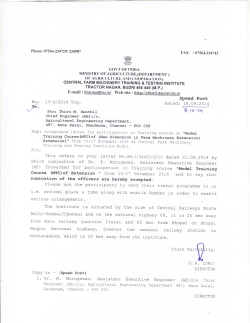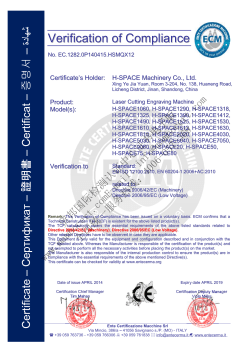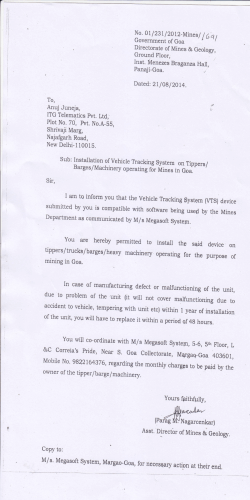
Draft Base Paper for National Policy on Capital Goods and
Draft Base Paper for National Policy on Capital Goods and Engineering Preamble "Capital Goods” sector comprises of plant and machinery, equipment / accessories required for manufacture / production, either directly or indirectly, of goods or for rendering services, including those required for replacement, modernization, technological upgradation and expansion. It also includes packaging machinery and equipment, refrigeration equipment, power generating sets, equipment and instruments for testing, research and development, quality and pollution control. In a challenging global environment, India has earned the distinction of being one of the fastest growing economies in the world over the last decade. During this period manufacturing sector has exhibited a growth rate of ~7%, and has been a strong contributor to overall GDP growth. However GDP contribution of manufacturing at ~18% is still low when compared to other developing countries (25-35%). This promises a significant upside for manufacturing in the coming decades, provided the fundamental enablers to create a vibrant manufacturing ecosystem are in place. 1. Capital goods sector is extremely crucial for the development of the country's economy for the following two important reasons: – Capital Goods is considered as a strategic sector and development of domestic capabilities is essential from a national self-reliance and security perspective and – Capital Goods sector has multiplier effect and has a bearing on the growth of user industries as it provides critical inputs, i.e., machinery and equipment to the remaining sectors covered under the manufacturing activity. 2. Current state: The capital goods sector contributes 12% to the total manufacturing activity (which is about 15% of the GDP). It is a large and diverse sector in India with a market size of INR 2,50,000 Cr in 2013–14 and a domestic production of close to INR 1,92,000 Cr. The sector is estimated to grow to a market size of approx INR 4,65,000 Cr in 2016–17 with domestic production of approx INR 4,00,000 Cr. The sector is a major employer, with close to 13,00,000 1 people employed across various sub-sectors. The sector has grown at the rate of 15% per annum over the last decade. Heavy electrical and power plant equipment is the largest sub-sector contributing to approx 65% of total capital goods requirement. Other large sub-sectors include construction equipment, process plant equipment and dies and moulds. The sector contributes significantly to exports with over Rs 52,000 crores in 2013-14 which have grown at approx 20% per annum over the last decade. Amongst the sub-sectors, heavy electrical equipment and power plant equipment also drive exports, recording export revenues close to INR 30,000 Cr in 2013-14 growing at a rate of 18% per annum. The sector also imports to the extent of Rs. 1,14,500 crore, which is 37% of the total demand of capital goods. 3. Key issues of concern: The capital goods component in industrial production has lagged in recent years due to slow pace of domestic demand leading to growing dependence on imports and following slow growth in the world economy. Further, in the globalized world and as trade barriers in the form of tariffs are reduced, not all capital goods manufacturers have been able to tap the global opportunity. Today, the sector has witnessed a gradual improvement and registered a positive growth from April to December 2014 at 5.7%. The following key concerns need to be addressed if we are to retain a positive growth and increase the share of capital goods contribution to the manufacturing growth in the country to achieve the target of improving the overall contribution of capital goods to manufacturing to 20%. a. Imports continue to address ~35-40% of domestic demand for capital goods with the proportion being significantly higher in "critical components" segment for each subsector. Machine tools, heavy electrical and power plant equipment are sub-sectors that are particularly weak in self reliance with ~40% of demand being met by imports. b. Indian share in global exports in the capital goods sector is still low, ranging between 0.1% and 0.6%, across various sub-sectors. In contrast, share of global exports for China ranges between 7.7% and 16.3% depending on the sub sector. c. The prospects for growth of the capital goods sector in India have always been projected to be good. Basis this, industry has invested significantly in capacity while the market 2 growth has not been commensurate with the same. This has led to large blocks of underutilized capacity, waiting to capitalize on the latent demand in the market. d. Beyond 4-5 large players, the market is fragmented with the majority of operative units in the SME sector. These SMEs are challenged vis-à-vis large foreign competitors with low operating scale and issues related to access to capital. e. Historically, lower appetite for capital investment in R&D and limited know-how of process technologies, the technology profile of domestic products ranges from basic to intermediate. f. Support facilities, technology development institutions and skilled man-power continue to lag behind global standards g. Cost disabilities such as higher cost of power, finance and infrastructure leading to higher operating cost. The growth of the capital goods sector is fundamental to the growth of the Indian economy. For the manufacturing sector to achieve the aspiration of contributing close to 25% of the country's GDP, significant investments will be required in capital goods. This has the potential of propelling the sector to ~ Rs.7,00,000 crore over 4-5 years. It is critical to nurture the growth of the capital goods sector, spur domestic demand and carve out a greater share of the exports market. This would also be aligned to the Government of India's vision for "Make in India". To facilitate creation of an enabling environment for the capital goods sector, a National Policy is envisaged to unlock the limitless potential by proactively addressing the issues of concern and establish India as a global manufacturing powerhouse. 4. Vision & Mission for the Capital Goods Sector in India 4a. Vision: “To increase the share of capital goods contribution from present 12% to 20% of total manufacturing activity by 2025” 4b. Mission – Become one amongst top 10 capital goods producing nations of the world 3 – Raise exports to a significant level of at least 40% of total production. 5. Strategies 5a. To determine enablers and set mission for each enabler, complementing vision. For example enablers such as availability of Finance, Raw Material, Innovation and Technology (R&D), Skills Development, Productivity, Quality & Environment Friendly Manufacturing Practices (No Defect, No Effect), Exports (Share in the Global Markets), Domestic Demand, etc. 5b. Policy Tools - To put in place policy tools to achieve the Vision / Mission for the Sector. The ultimate objective should be to unleash the growth potential of the sector. It inter-alia includes:- 1. Creating an Eco-system for globally competitive Capital Goods Sector a. Long term strategy for the sector to be defined on the basis of local demand opportunities b. Modify public procurement policies (e.g. government tender norms) to give preferences to local manufacturers within WTO framework and also technology, skills and industrial infrastructure c. Develop schemes in collaboration with other Ministries for replacement and refurbishment of old assets such as those in Power Plants, process plants, etc., d. Duty structure to be revised in such a manner that it does not provide undue advantage to imports but provides at least 5% difference to enable domestic manufacturing viable. e. Incorporate safety, environment and performance standards as mandatory norms equivalent to international practices. f. FTAs / PTAs with partner countries should be re-negotiated further (wherever feasible) with a view to providing equal playing field to local manufacturers. g. Addressing challenges like cost of money, ease of doing business, skill availability, standards equivalent to international standards, international exhibitions spaces in India, export policy/incentives support based on achieving global competitiveness, etc. 4 h. PSUs and few large private sector units to be developed as MNCs with presence in overseas markets. 2. Creation and Expansion of Market for Capital Goods Sector a. Close public–private collaboration is required to ensure that the opportunities across the complete production value chain get captured b. High collaboration will help manufacturers and end-users to de-risk their operations c. Provide stable and investor friendly tax regime while actively addressing the current inverted duty structure 3. Promotion of Exports a. Introduce market access incentive scheme for capital goods (e.g. Thailand, Cambodia for textile machinery, Indonesia – mining equipment, Middle East, central Asia and Tanzania – oil & gas) b. Streamline processes and logistics for exports c. Provide incentives under export promotion scheme such as Merchandise Exports from India Scheme (MEIS) & Service Exports from India Scheme (SEIS) d. Open a focused line of credit for capital goods exports in partnership with EXIM Bank of India e. Support for soft promotions overseas should be provided to facilitate the entry of local manufacturers into global markets f. Support exporters through appropriate incentives and financial enablers such as extending line-of-credit g. Strong PSUs should be supported through focused export-led growth 4. Human Resource Development a. Work with Universities & Institutions to promote skills, needed for capital goods sector 5 b. Further institutional mechanism to multi-institutions rope in industry for curriculum development and training c. Facilitate opening of greater number of training institutes to provide skills required for capital goods industry d. Skill development to be incentivized like R&D at par with global best practices e. Long term, India to be made skill capital of the world. 5. Technology & IPR a. To help implementing full fledged scheme on "Enhancement of Competitiveness in the Indian capital goods sector" through enabling policies for technology transfer, up-gradation and innovation b. Identify acquisition opportunities overseas to plug technology gaps i. Acquisition of critical technologies will enable more appropriate product portfolios that would facilitate entry into global markets ii. Rapid technological advancement through the acquisition route will help compete against imports by offering a superior value proposition to end users c. Incentivize private sector in order to increase R&D expenditure d. Spread awareness amongst end-users to embrace new technology products e. Set up like ‘Fraunhofer’ (Germany) type institutes in India to have global level R&D / technology development framework. f. Provide special thrust for Green Manufacturing through R&D and Innovation 6. a. Introduction of Mandatory Standards Define national policy to increase present 5% of product range coverage to at least 25% in next 5 years and 50% in 10 years, which are equivalent to international standards. b. Safety, environment, quality based mandatory standard may be made for all he products in next 5 years. 6 c. Import of second hand machinery is high in India; mandatory standards should be brought in force to discourage this practice. It is critical to introduce mandatory standards and age profile with an aim to curb inflow of sub-standard machinery into the country and to discourage import of obsolete second hand machinery d. Set up institutional mechanism to determine necessary standards and age profile for machines as well as policies for enforcement. 7. Focus on SME Development a. Promote indigenization with a specific focus on SMEs b. Support and promote SME growth by supporting their technology modernizations, skill development, product development and export facilitations. c. To promote SMEs in the sector, introduce Interest subvention scheme like TUFS which provides concessional rate of interest from 2-4% 8. Support Services a. Build up data base of production through suitable reporting system b. Work on ITC(HS) codes with a view to increase coverage of description of machinery. 9. Sub-sector specific strategies 1) Machine Tools a. Facilitate FTAs/ PTAs with partner countries to ensure level playing field for domestic manufacturers b. Resolve funding issues for SMEs, provide seamless access to capital c. Facilitate moderation of interest rates for this sub-sector to spur growth d. Institute schemes to bridge skill and technology gap in this sector – promote technical institutes for machine tools 7 e. Resolve government tender terms to not disadvantage Indian manufacturers f. Implement import specifications for safety & performance to avoid dumping of sub-standard machinery g. Set up institutional mechanisms like those adopted in Fraunhofer Society, Germany to develop products and technologies 2) Textile Machinery a. Introduction of minimum standards for equipment, esp on imported second-hand, refurbished machinery b. Promote technology upgradation with a view to rising sensitization for aesthetics c. Streamline procedure for refund of terminal excise duty d. Set up at least one common facility centre at each of the textile machinery clusters e. Plan to incentivize setting up of industrial units for manufacture of machinery for technical textiles, knitting, and other un-represented textile machineries. 3) Construction Equipment a. Improve technology collaboration with European manufacturers including schemes to promote technology transfer b. Institute WTO compatible norms primarily related to anti-dumping from low-cost countries and prohibiting import of non-standard used second-hand machinery c. Implement standards in end user industries such as mining to promote safety and environmental awareness d. Facilitate streamlining of tax and duty structure to promote domestic demand e. Support financial institutions for lower interest rates, through interest subventions f. Formulate safety norms. 8 4) Heavy Electrical and Power Equipment a. Institute schemes to improve operating cost structure of local Indian companies b. Grow and promote testing facilities in India c. Facilitate redesigning of export promotion schemes d. Norms for prohibiting import of sub standard second hand and refurbished machinery e. Develop training institutes to build skill manpower f. Promote investment in infrastructure especially for transportation and logistics (railways, roads/highways, ports) for movement of equipment 5) Plastic & Rubber Processing Machinery a. Develop and promote CFCs in each of the manufacturing clusters to build efficient supply chain b. Negotiate FTAs/PTAs with partner countries to spur domestic production c. Institute norms to prohibit import of poor quality machinery d. Rationalize import duty structure for components used in such machinery esp for automation 6) Process Plant Equipment a. Rationalize tax and duty structure on imports to promote level playing field for domestic manufacturers b. Introduce minimum standards and prohibit import of sub standard second hand machinery c. Rationalize terms in Export Credit Agency (ECA) funding for large mega projects to promote domestic manufacturers and limit mandate of sourcing equipment only from donor countries subject to WTO norms d. Simplify documentation and paper work related to the entire manufacturing value chain for such equipment e. Promote advanced manufacturing techniques 9 7) Dies and moulds a. Financial support at lower rates of interest b. Allow for special depreciation rates in tool room industry for better return on investment c. Promote testing facilities in India d. Rationalize duty and tax structure on imports, negotiate FTAs/PTAs to promote domestic production of dies and moulds e. Set up at least one CFC in each of the cluster. 8) Printing & Packaging machinery a. Check the imports through local manufacturing through technology transfer b. Attract FDI 9) Metallurgical Machinery including Steel Plant Equipment a. Promote local manufacturing through transfer of technology b. Attract FDI 10) Advanced manufacturing technology, automation and 3-D printing a. Establish Common Engineering Facility Centre at industry clusters The views / suggestions are invited on the above Draft Base Paper to prepare a Policy Paper on Indian Capital Goods Industry from industry, industry bodies and other interested persons to the following: (i) Shri Vishvajit Sahay, Joint Secretary (HE&MT) Department of Heavy Industry, Udyog Bhawan, New Delhi – 110011 Tel: 011-23061858, e-mail: [email protected] (ii) Ms Ratika Jain, Executive Director – Manufacturing Confederation of Indian Industry, The Mantosh Sondhi Centre 23, Institutional Area, Lodi Road, New Delhi – 110003 Tel: 011-24682228 e-mail: [email protected]” 10
© Copyright 2025










